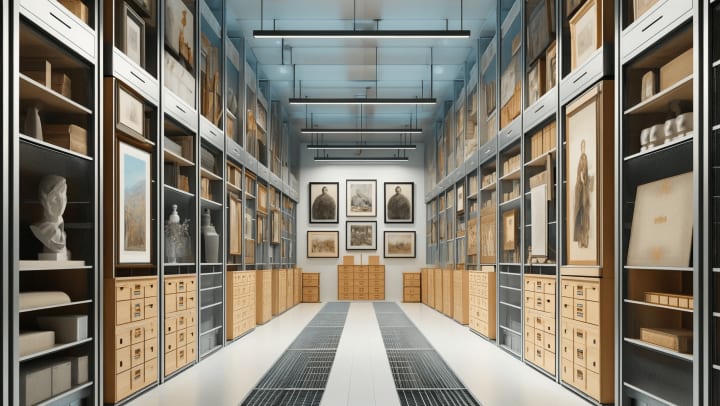Introduction:
Storing art requires careful consideration to preserve its quality and integrity. This guide will explore the best practices for art storage, covering everything from climate control to security measures, ensuring your valuable pieces are well-protected.
Chapter 1: Understanding Art Storage Needs
- Sensitivity to Environment: Artworks are sensitive to light, temperature, and humidity. Proper storage conditions must be maintained to prevent damage.
- Types of Art: Different storage methods may be required for paintings, sculptures, paper works, and other media.
Chapter 2: Types of Art Storage Solutions
- Home Storage Solutions: Tips for safely storing art in your home, including using archival materials and avoiding basements and attics.
- Professional Art Storage Facilities: These facilities offer climate-controlled environments and advanced security systems specifically designed for art storage.
- Specialized Art Racks and Cabinets: Designed to maximize space and protect artworks from physical damage.
Chapter 3: Climate Control for Art Storage
- Temperature and Humidity: Ideal conditions for most art storage are 70°F (21°C) and 50% humidity. Specialized climate-controlled systems are necessary to maintain these conditions.
- Lighting: Art should be stored away from direct sunlight and in conditions where light exposure is controlled and minimal.
Chapter 4: Preparing Artworks for Storage
- Handling and Packaging: Instructions on handling artworks with gloves, wrapping paintings in acid-free paper, and using padding for sculptures.
- Framing and Mounting: Benefits of using archival-quality frames and mounts to protect artwork during storage.
Chapter 5: Security and Insurance
- Security Measures: Importance of security systems, including surveillance cameras, motion detectors, and controlled access.
- Insurance: Ensuring artworks are adequately insured while in storage, including considerations for appraisals and updating insurance values.
Chapter 6: Accessing and Managing Stored Art
- Cataloging: Keeping a detailed inventory of stored artwork, including photographs and condition reports.
- Regular Inspections: Schedule regular checks of the storage area and artworks to ensure there are no issues such as mold growth or pest infestations.
Conclusion:
Proper storage is crucial for preserving the value and beauty of your artworks. Whether storing at home or in a professional facility, following these guidelines will help ensure your art remains in excellent condition for future generations. Visit a modSTORAGE Art Storage Facility near you
Call to Action:
Review your current art storage practices, consider improvements, and if necessary, consult with professionals to ensure your art storage solutions meet the highest standards of preservation and security.

